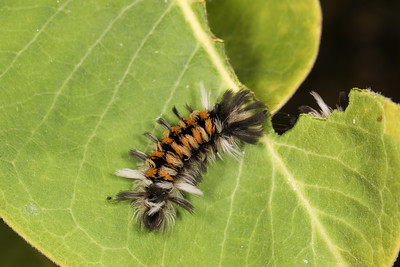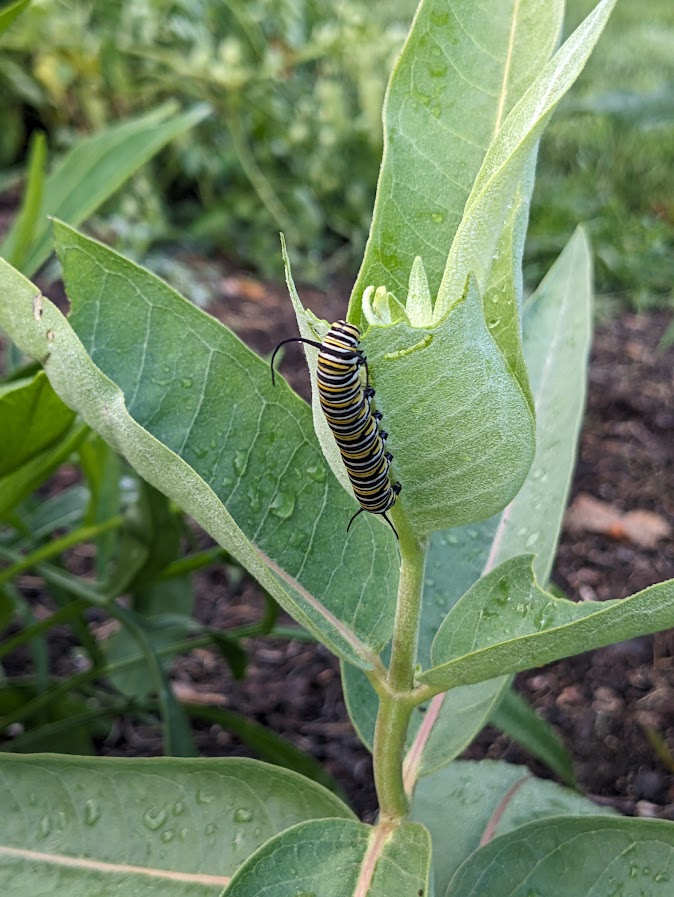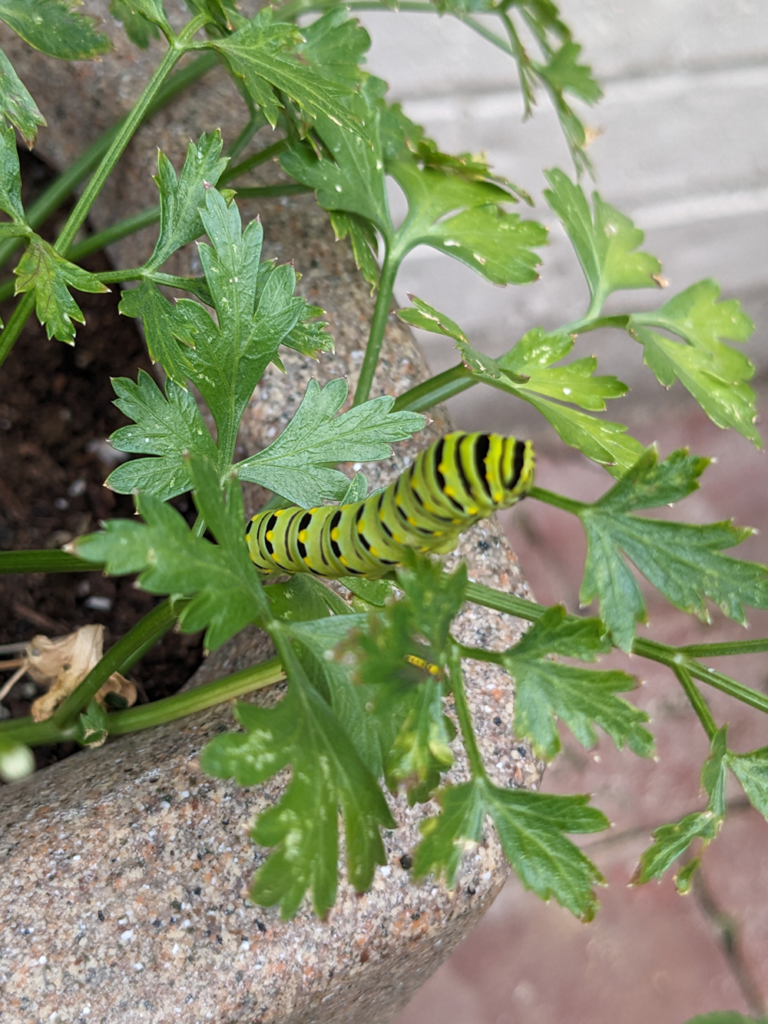We’ve written about the importance of making sure to include host plants in your butterfly gardens, so you can support multiple generations of pollinators rather than just providing a food source for adults passing by.
The result of this, of course, is that your goal is to support pollinator larvae, or caterpillars, in your garden. This can be a shift from many traditional gardening approaches where all insects are thought of as pests to be eradicated. And it’s natural to have some concerns over the health and looks of your beloved plants if they are to become caterpillar food, but remember that these relationships have persisted for millions of years and the species have co-evolved together, so it’s what both have grown to expect.
With that understanding, the next thing that many newer native plant gardeners wonder is how they can actually find the caterpillars that they are cultivating in their gardens.
Where to Find Caterpillars: Identify Caterpillar Species and Their Host Plants
The first key to observing caterpillars is ensuring that your plants will actually be able to use them as food. We’ve mentioned the idea of host plants, and you can take the plants in your garden and look up which species of lepidoptera (butterflies and moths) active in your area tend to use them as a host.
A favorite of many native plant gardeners is milkweed (asclepias) which is the only host plant for the popular monarch caterpillar. It also hosts other species, like the milkweed tussock moth, which is fairly ordinary-looking in its adult form, but the caterpillars have a striking colorful, woolly look.

Another tip is that host plant relationships are often listed by genus, and particular species can be better hosts for particular lepidoptera. Butterfly weed (asclepias tuberosa), for example, is a great nectar source but many gardeners report fewer monarch caterpillars on it than other varieties like common, swamp, and prairie milkweed.

Other popular host plants include, but are certainly not limited to, Purple Coneflowers (Echinacea purpurea): Silvery Checkerspot, Common Buckeye, Black-eyed Susans (Rudbeckia spp.): Silvery Checkerspot, Wavy-lined Emerald, and Asters (Symphyotrichum spp.): Pearl Crescent, Painted Lady.
In most cases, host plants are going to be native to your area. But there are of course exceptions to this rule, such as swallowtail caterpillars which love to use popular herbs like dill, fennel, and parsley as a host plant. This is because they can use a variety of plants in the carrot (Apiaceae) family, so you could see their caterpillars on the foliage of a carrot in your vegetable garden, or on a golden alexander (zizia spp), a US-native plant that is also in the same family.

A variety of online websites (like the NWF native plant finder) and field guides can help you identify the insect species that use the plants in your garden, and help you identify new plants to add.
Where to Look and What to Look for to Spot Caterpillars?
In some cases you may hit the jackpot and see a caterpillar crawling across a leaf. But in others you need to first find other signals that clue you in to where they may be. This can include chewed leaves, caterpillar droppings (known as frass), and silk threads. The caterpillars may be hiding under the leaves to avoid predators, and can also sometimes be found on stems. Curled up leaves may reveal a caterpillar if you carefully unfurl them.
Also, seeing their natural predators congregating around particular plants (such as birds and parasitoid wasps) is another major clue that there are caterpillars there.
Patience is truly the key to successful observation. If you have a space to comfortably sit near your plants, it may take some time (say, a half hour) before you are successful. Remember that many species of caterpillars will camouflage themselves very well, so you often need to look very closely to notice them. And for many species, especially moths, the caterpillars are extremely small, much
What Time of the Day Is Best for Spotting Caterpillars?
In general, the beginning and ends of the day are a better bet for discovering caterpillars than midday. In the early morning (say 6am-10am), many caterpillars are feeding and enjoying the cooler temperatures and there is often less predator disturbance.
Many species are also active in the later afternoon and early evening when temperatures are again cooler. (Many moths in particular are active later in the day.) It also follows that cloudy and overcast days tend to have even more caterpillar activity on leaf surfaces without the harsh glare of the sun.
What Time of the Year Will I Find the Most Caterpillars?
The summer months of June, July and August typically mark peak caterpillar activity in most areas. But depending on the species that use your plants, there will be early instar caterpillars in the spring months of April and May, and in the fall you’ll find late instar caterpillars gearing up to pupate in September and into October, such as monarchs and other late-season butterflies.
The timing can vary so much depending on your area so this isn’t usually the area you want to spend the most time on. Also know that some years will be better or worse for butterflies overall, so you’ll see some natural fluctuation in the numbers that come to your yard even if you have the perfect buffet of native host plants for them.
Make Sure Your Garden Is Caterpillar Friendly
To help create healthy conditions it’s important to avoid using pesticides whenever possible, as they can significantly harm caterpillar populations. Having a water source in your yard and keeping stems and leaves intact through the winter are other easy wildlife friendly gardening practices that help support caterpillars and other types of wildlife too.
Planting a diversity of plant species also helps attract a wider range of caterpillars, but also try to mass at least 3 of each plant relatively close together so that adult butterflies and moths will be able to find them when in bloom. If you only have a few isolated single plants of any given species, the adults won’t be able to find them and lay eggs, and you won’t get any caterpillars.
Helpful Tools for Garden Caterpillar Observation
For the smaller moth caterpillars and those that are masters of disguise, some enthusiasts recommend using a magnifying glass to observe them and also identify their eggs.
It’s a fun practice to take pictures of your finds with a smartphone and you can use a variety of ID apps like iNaturalist to help confirm their species and add to a growing body of citizen science.
You can also use either an app or old fashioned notebook to jot down your own observations and dates.
All of this can enhance the caterpillar watching experience and add to your understanding of their lifecycles and behaviors, as well as make the activity of native plant gardening even more rewarding.
Leave a Reply